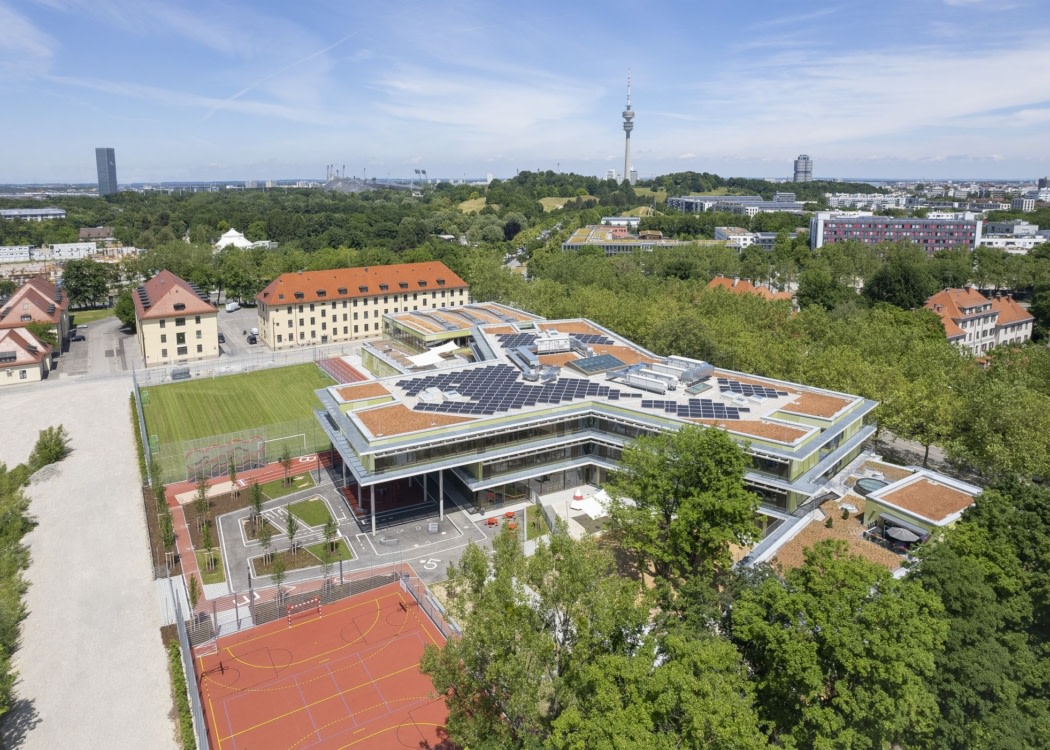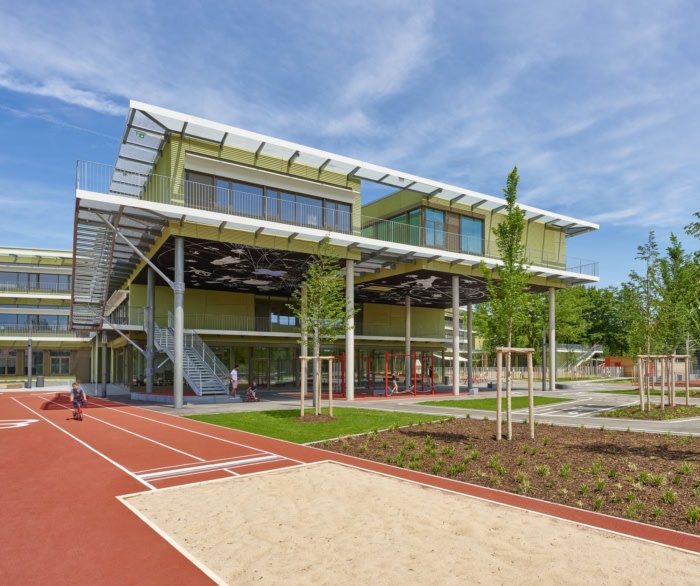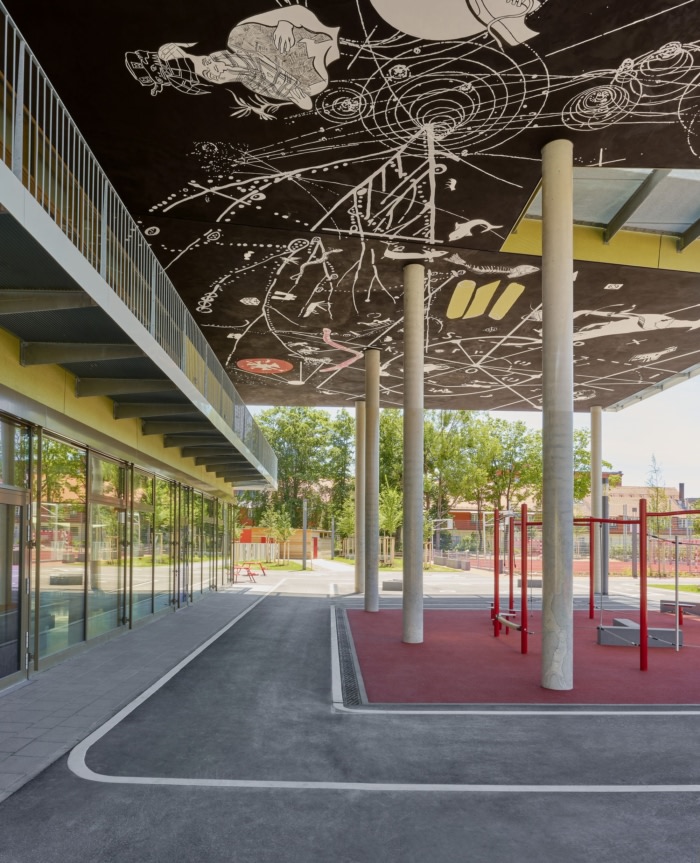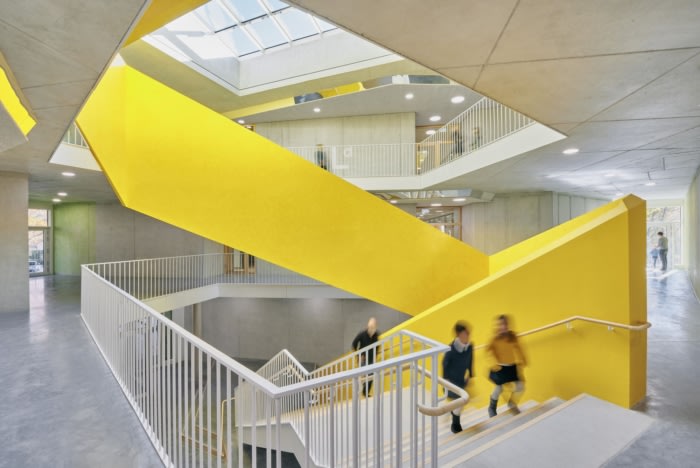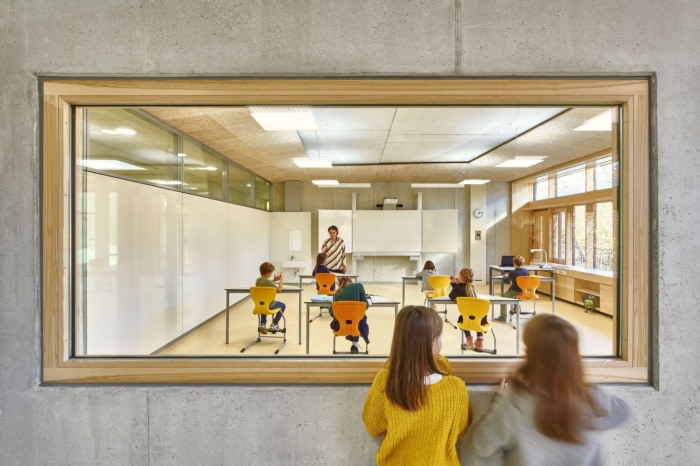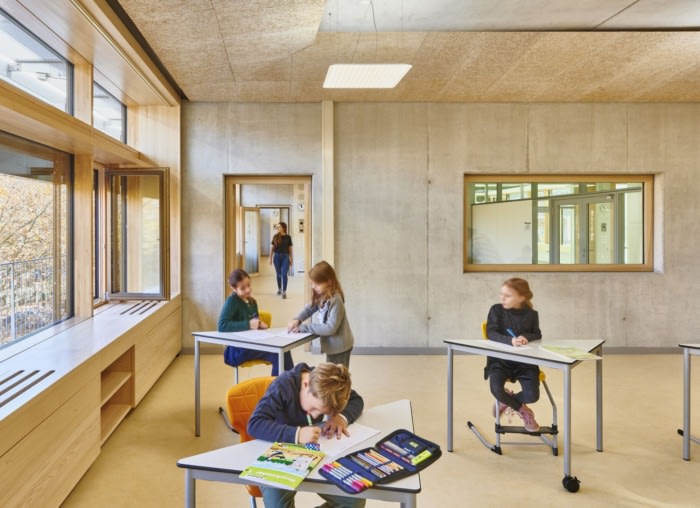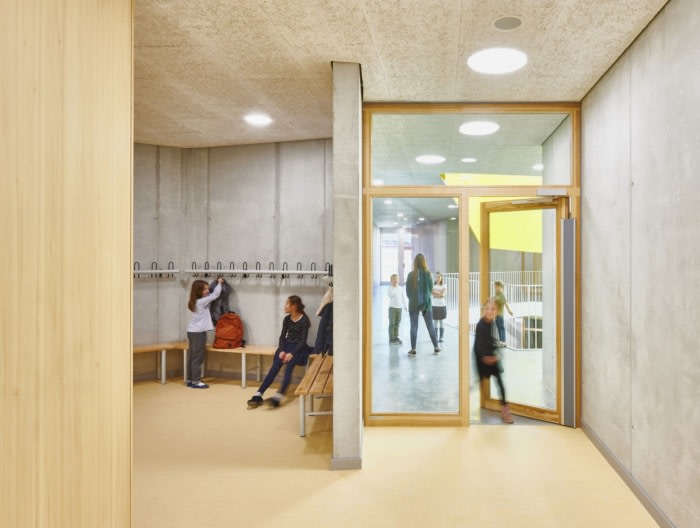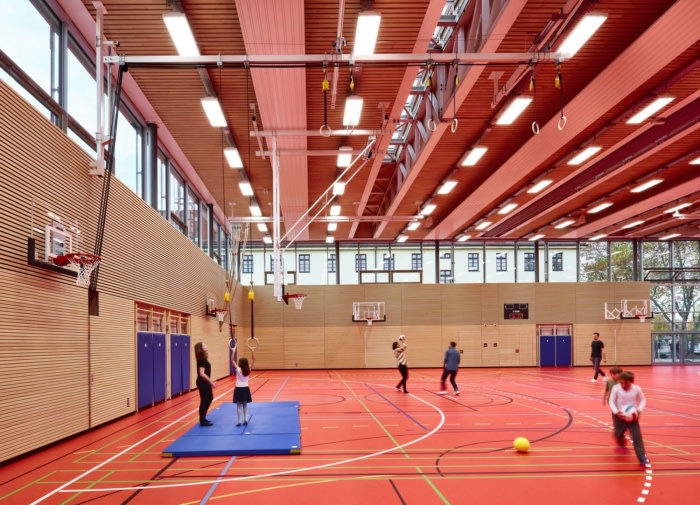Infanteriestrasse Elementary School
Behnisch Architekten created a multi-level space with thoughtful details for dynamic learning at the Infanteriestrasse Elementary School in Munich, Germany.
The new elementary school on Infanteriestrasse in Munich’s “creative quarter” caters to up to 500 children and incorporates a double-sized sports hall. The five “learning houses” have an open structure, allowing the space to be used in a variety of ways and providing a vibrant setting for learning. The affiliated childcare center known as the Haus für Kinder (literally “house for children”) can provide care throughout the day for 100 children between 0 and 6 years old.
A green educational setting in the creative quarter
Infanteriestrasse elementary school is situated on land that was once occupied by the Luitpoldkaserne barracks. Notable for its heritage historic buildings and abundant green spaces, this site south of the Olympic Park is currently being transformed into a new urban quarter. A plaza in front of the building along Infanteriestrasse is lined with mature trees, and here the three-story school’s differentiated spatial profile where it flanks the street also takes on a protective function. At the rear, shielded from the noise of Schwere-Reiter-Strasse, there are extensive exterior spaces and sports facilities that anchor the school into the neighborhood. The school itself has a star-shaped floor plan, with three wings arranged around a central staircase that functions as an atrium, taking people to other parts of the school. As such, it is not only the heart of the building but also its vertical and horizontal axis.Bright, daylight-flooded school
The new elementary school is designed according to the principle of the “learning house” concept developed in Munich, which envisages small-scale units—in this case five “learning houses,” each with up to 100 students of different ages. The communal functions such as the cafeteria and a multifunctional room are on the first floor, while the learning houses are arranged around a shared hub in the wings of the star-shaped floor plan on the second and third stories.A school building to enhance interaction
The interior of the school has a “homely” atmosphere. The use of discreet, pale tones in combination with fair-faced concrete and untreated wood gives the teaching spaces a pleasant and calm atmosphere. Wall cladding, built-in shelving, dividing walls, and elements of the facade made of silver fir all highlight the light and friendly nature of the interior spaces and ensure a haptic sense of materiality. In the light-filled atrium, the yellow surfaces of the balustrade reflect the daylight entering from above, extending deep into the interior of the space.Outside, a playground bike track encourages children to engage in more physical activity. The running track, long-jump pit, climbing wall, grassy area, and all-weather sports pitch are an incentive for students to play and have fun. One wing of the building has a significant overhang, offering students sheltered areas during recess where they can move around freely in bad weather. The underside of this oversail is decorated with a piece of public art: a painting by artist Ruth May that spans the ceiling as if it were a vivid sky above the children’s heads.
A sustainable concept for climate and energy
Projecting fire-escape balconies made of steel wrap around the facades, creating a sense of horizontal segmentation. The concept for the building’s materials and color scheme evolved from the surrounding greenery with its magnificent stock of mature trees. The sections rendered in three graduated tones of green reflect the changing colors of the deciduous trees. Light shelves on the facade are used to support the energy-saving concept for daylight and climate control. They control and reflect the light and ensure that it is distributed equally in the classroom. Direct sunlight is avoided through the use of roof overhangs and adjustable sunshades that reduce the heat load in summer.
Design: Behnisch Architekten
Photography: David Matthiessen

